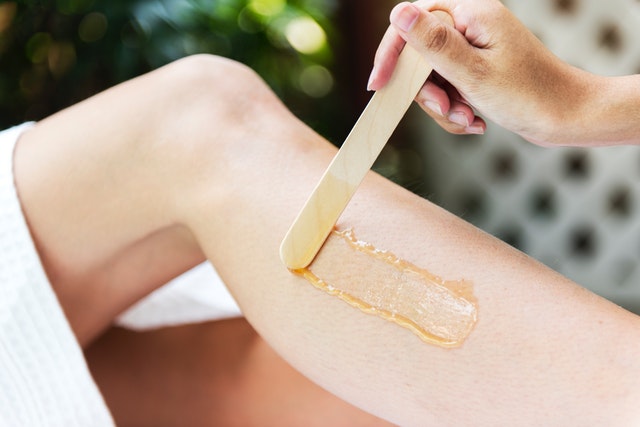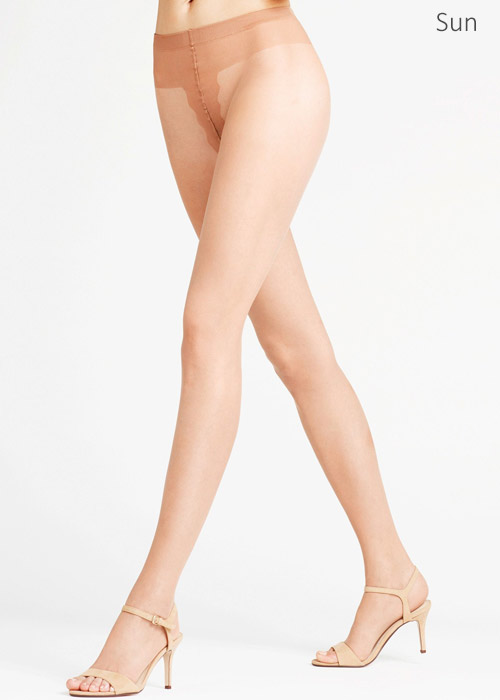If there is one thing guaranteed to ruin the look of your legs when you are wearing sheer hosiery it is hair showing through your tights. There are only two options: wear opaque tights or get rid of the hair. Wearing opaques is fine in the late autumn, winter and early spring. But they’re not much of an option in the warmer weather.
What you do with the hair on your legs depends very much on the hand you were dealt with by your genes. Those of you with naturally fair hair and fine hair on your legs can, and probably should, count your blessing and leave well alone. At the other end of the scale, if you have heavy dark hair then you will need a routine to keep it in check.
There are many ways to remove hair, all with plus and minus points.
Shaving
Shaving it what most people think of when you mention hair removal. But we mention it first here not because it is the best method but because it is the one most commonly used. Certainly, shaving will give a very smooth finish but at the risk of cuts and nicks, shaving rash, stubble and, it is reputed, strengthened hair growth.
Cuts and nicks you can avoid by buying a quality multi-blade razor and changing the blade regularly. If you have quite thick hair you will find that razor blades will wear out very quickly. You should never use a blade that is not 100% sharp so shaving can be expensive. Ladies, you may find that a man’s razor gives better results than the pretty pink ones made for ladies.
Cuts, nicks and shaving rash can all be reduced by a combination of lubrication and paying close attention to the direction of growth of your hairs and shaving in the right direction, this will vary from one part of the leg to another.

Shaving foams and other alternative products
Shaving foams and creams can dry the skin, and after much experimentation, we have identified what we believe to be the best lubricant: baby oil. If you are not in a hurry run yourself a warm bath and just before you get in squirt in some baby oil, this will float on the surface. Relax in the bath taking your legs in and out of the water; the oil will form a very thin film over your skin and provide for a smooth shave as well as moisturising your legs.
Stubble will only be an issue if you have very thick and quick growing hair or you don’t shave every day. Try combining shaving with IPL for optimum results.
Once you start shaving you may find the only way to move to another method is to stop to allow a full growth to establish.
Tweezers
OK for taking out the odd rogue hair. But, given the numbers of hairs on a typical leg, it’s not a practical method for total hair removal.
Epilator
The epilator is a mechanical device that mimics the action of tweezers but grabs and pulls multiple hairs simultaneously. They work, but if your hair is strongly rooted you can find that once it gets a grip on several hairs, the skin is pulled into the device rather than the hair being pulled out. We recommend that the epilator is reserved for softer and less well-rooted hair.
Waxing
Generally, waxing is notorious for being painful but like when you pulled a sticking plaster off your knee as a child; the faster it is done the less it hurts and the pain is transitory. Waxing works well because it takes a firm grip of the full length of the exposed hair shaft so is less likely to snap it than the epilator.
It should be noted that waxing needs to be done with swift and confident movements, so we recommend you have it done at a salon rather than trying home waxing.
A fair warning, waxing may inflame the follicles and lead to a rash or spots if you have sensitive skin. Before you have a whole leg done, try just one strip in an out of the way area. Be warned, back and inside of this part of the leg can be particularly sensitive.
Sugaring
Sugaring works in a very similar way to waxing. But rather than wax, it uses a paste the main constituents of which are sugar and lemon juice. This is something that you should most certainly have done at a salon. The recipe of the sugar paste and its temperature is hot. Hot sugar can cause very severe burns. If done regularly for years sugaring greatly reduces re-growth of hair.
In parts of the world where sugaring is done as a matter of routine for girls from puberty onwards, hair removal is almost unnecessary by the time that they marry. Not cheap but the best and most effective of the “pull it out” methods. It hurts less than waxing too!
Boots do a home sugaring product that gets rave reviews but we are yet to try it.
Hair Removal Creams
The chemical composition of hair is dramatically different from that of the skin. So it is possible to find chemicals that will dissolve the proteins in the hair without damaging the skin. The commercial hair removal creams use one of these chemicals combined with others to add bulk, to soothe, to moisturise the skin and to prevent the cream splitting.
The best known of the hair removal creams come from Nair and Veet, and they both produce many different creams that are formulated for coarse hair, sensitive skin etc. etc. or have a particular scent. The basic active ingredients are the same in all of them.
Patch-testing is essential
All these creams will tell you to test them on a small area first to test for sensitivity. We would take this advice a step further. Select an area of your skin from which you would like the hair to be removed, selecting what you think will be the most sensitive area of the leg. Follow the maker’s instructions to the letter and do not on any account leave the cream on longer than they recommend, don’t worry at this point whether you get perfectly smooth hairless skin.
Twenty-four hours later if you have not reacted to the cream do the same area again, this will generally remove surviving hair from the first treatment. It is better to do two shorter sessions 24 hours apart than to risk a burn by being too eager or leaving the cream on too long.
If after your two applications on the test area you have smooth skin with no rash or burn then you have found the cream for you.
Of all the creams that we tested, we found the best to be from Boots, it is their “expert sensitive hair removal cream”. It seems to remove even quite tough hair, and it does not irritate sensitive skin (in the case of our tester who reacted badly to waxing, shaving, Veet and Nair anyway). Everyone should buy at least one tube of this if only to get one of the little plastic spatulas that come in the box.
Used one way the spatula is for spreading the cream, always spread, never rub in, turn it over and you can use the edge to remove both cream and hair using a motion very much like shaving. This tiny tool hugely improves the effectiveness of the removal of the cream.
One few words of warning about hair removal creams:
- Always read the ingredient list, even if repeat buying your favourite.
- The active ingredient may change from one that suits you to one that does not.
- If you leave the cream on too long and get a chemical burn that can trigger a sensitivity
- Repeated used of any cream can cause a sensitivity…if this happens then stop using the cream at once.
Laser and IPL
We list Laser and IPL together because a lot of salons offer “laser IPL hair removal”. This is misleading as they are two distinct methods that both just happen to use light.
Laser: In simple terms, a laser is an extremely intense beam of light that destroys a single hair follicle. As such, it is especially popular for permanent hair removal. Laser hair removal is expensive and if you having your legs done very time-consuming. The laser is a salon procedure, with the exception of the Tria home device. We recommend you have laser done at a beauty centre, though.
IPL or Intense Pulse Light: The head of the IPL machine looks a little like a photographic flash, and indeed it works a bit like one too. The key difference is that the IPL head has a mirrored screen to ensure that only non-harmful wavelengths hit your skin.
IPL takes advantage of the different light absorption properties of dark hair and light skin so that the dark hair gets hot without the skin getting warmed. The hot hair in the follicle interrupts the growing cycle of the hair which reduces the amount of growth an number of growing hairs.
The head of the IPL machine looks a little like a photographic flash, and indeed it works a bit like one too. The key difference is that the IPL head has a mirrored screen to ensure that only non-harmful wavelengths hit your skin. IPL takes advantage of the different light absorption properties of dark hair and light skin so that the dark hair gets hot without the skin getting warmed. The hot hair in the follicle interrupts the growing cycle of the hair which reduces the amount of growth an number of growing hairs.
IPL isn’t a hair removal method in itself though. Before treatment, you need to remove as much hair from above the skin as possible, most likely by shaving. IPL both reduces wear and tear on the flash head and ensures that as much heat as possible is generated in the follicle rather than wasted in burning surface hair. IPL is very good at preventing and removing ingrown hairs too.
Any IPL treatments at a studio can be costly, so much so that we would recommend that you try just one treatment to see if it works for you and then look to buy a machine to use at home.
Be aware that IPL only works if you have pale skin and dark hair. Plus it takes some weeks for the results to become evident and lasting.
We hope you find our hair removal guide useful. Should you have any questions, leave them in a comment and we’ll try to answer them. Or, maybe, check out our latest reviews on sheer tights.
